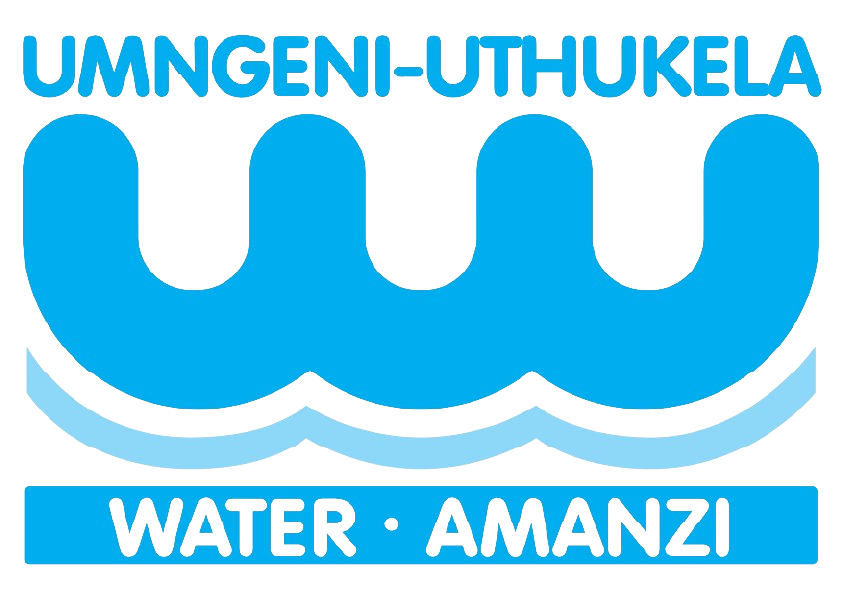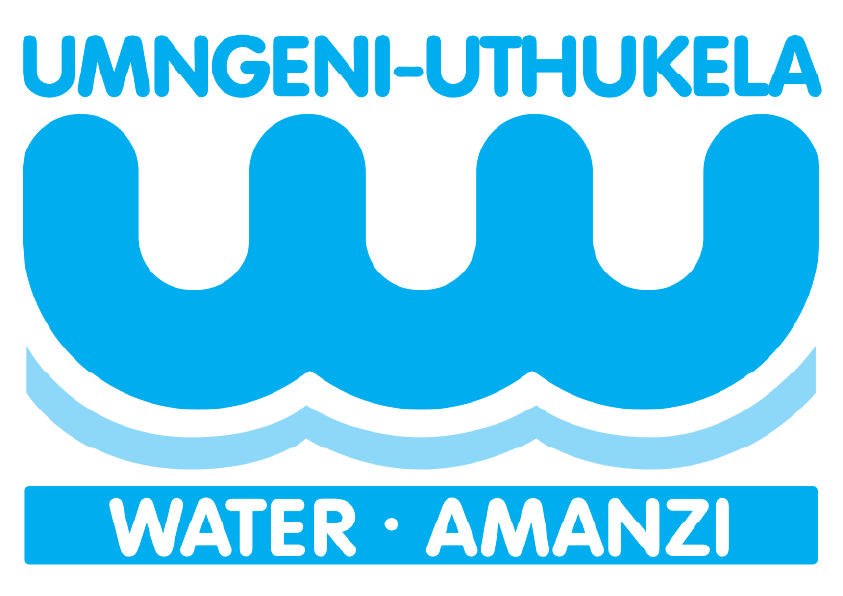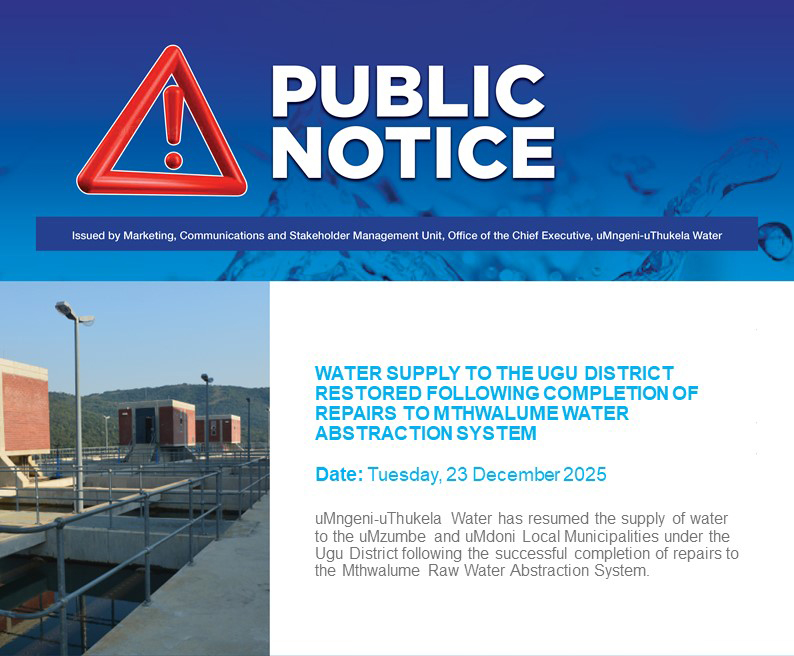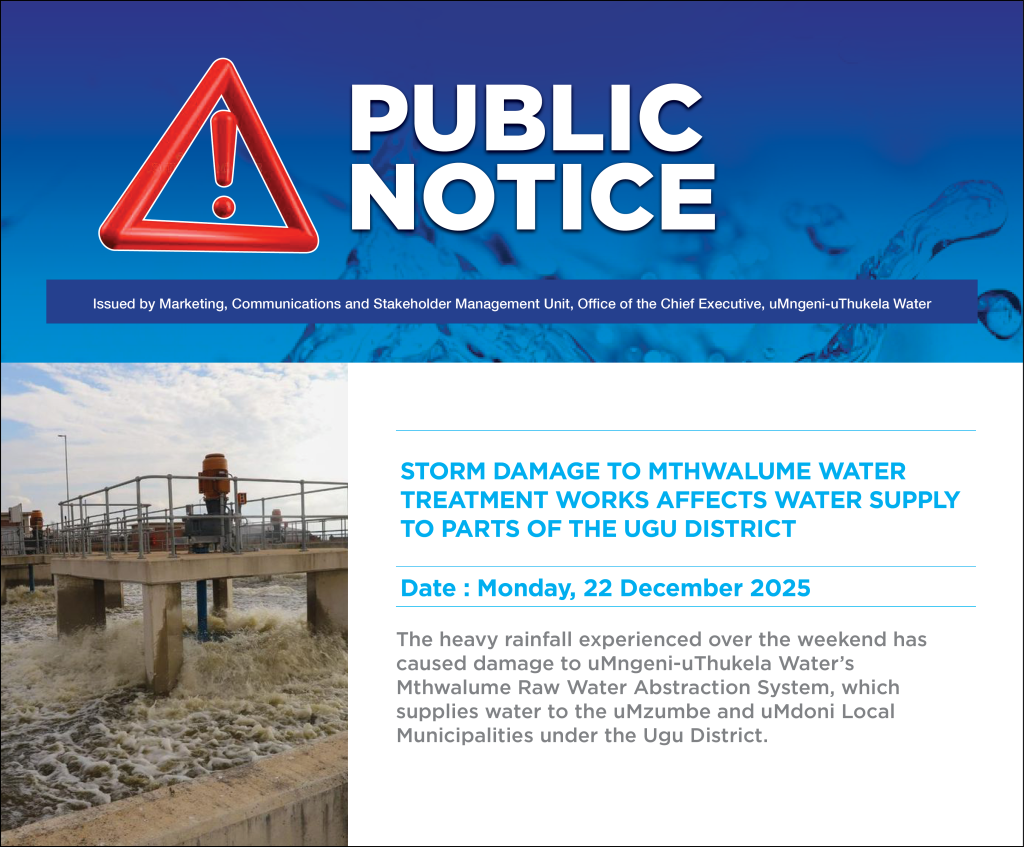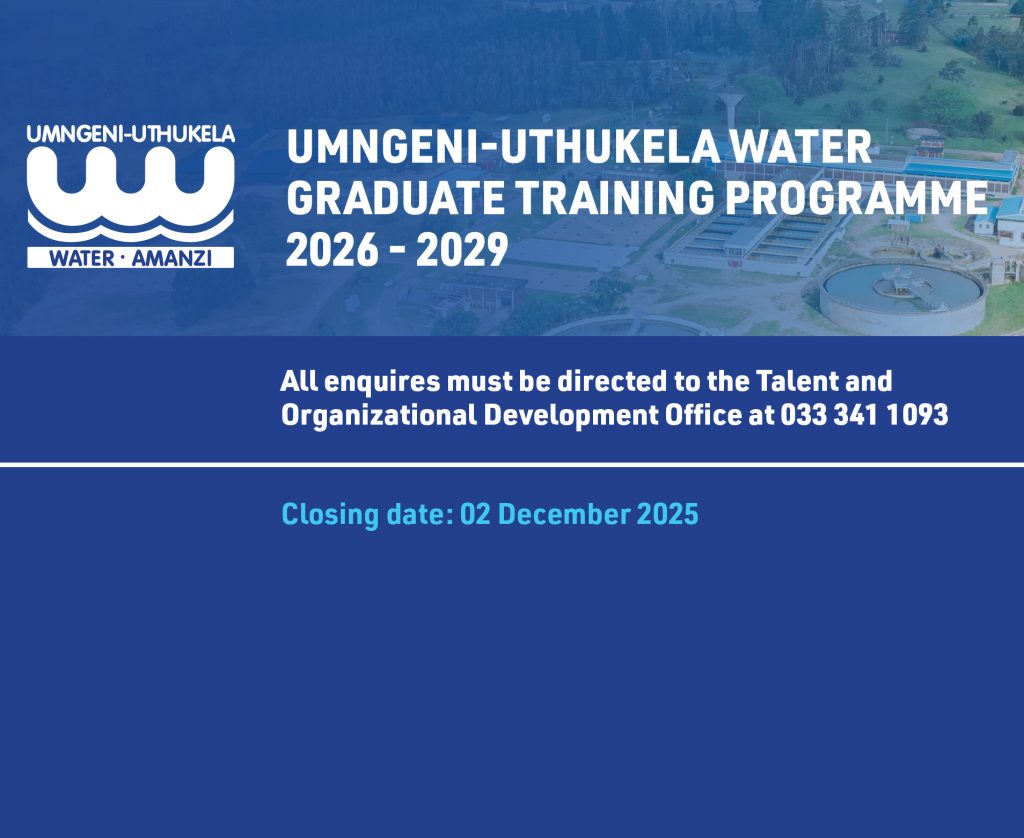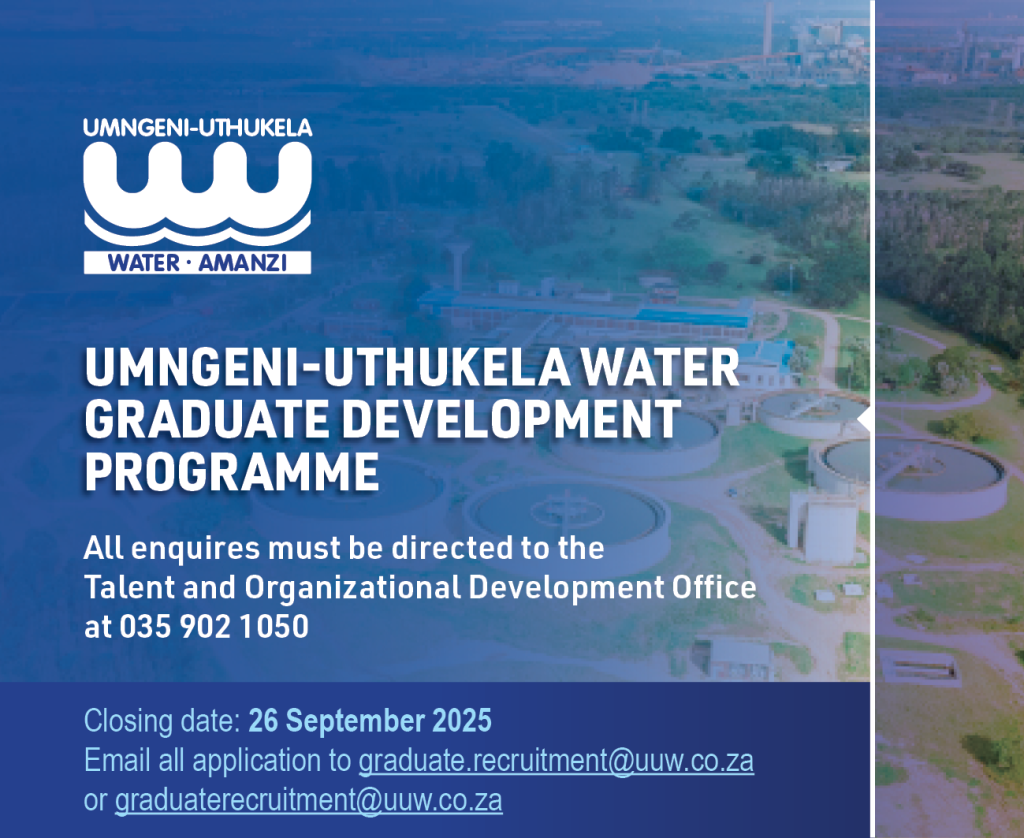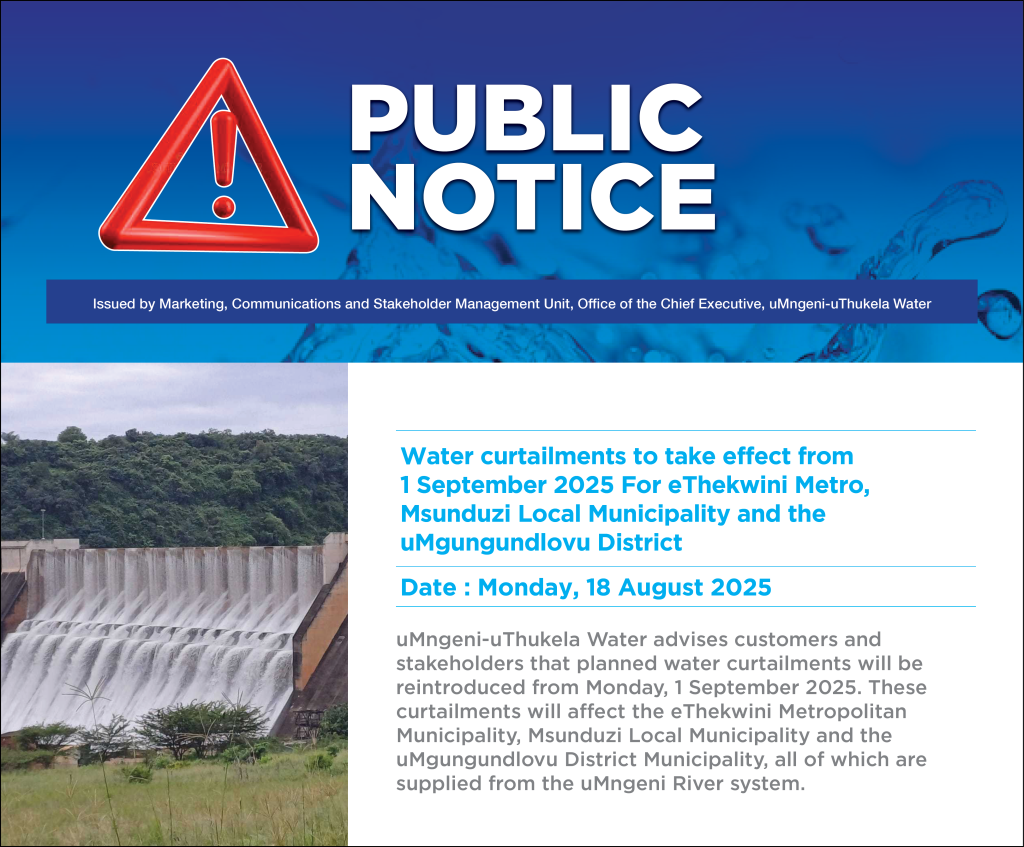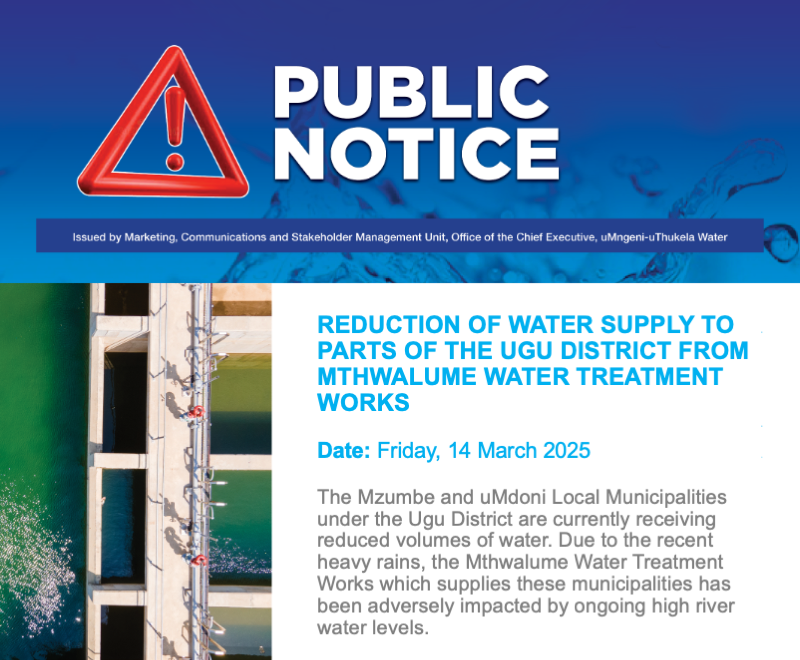[vc_row][vc_column][vc_column_text][/vc_column_text][/vc_column][/vc_row][vc_row][vc_column][vc_column_text]STATEMENT: Water Quality Monitoring Ahead of the Dusi Canoe Marathon
Monitoring of water quality in the Msunduzi River has been increased, as preparations get underway for the Dusi Canoe Marathon. In addition to routine water quality analysis, 11 additional sites have been included, in partnership with the the Duzi-uMngeni Conservation Trust, as part of initiatives to obtain more information which is shared with various stakeholders, including race organisers, with a view to early detection of problem areas and implementation of remedial or mitigation measures.
The Dusi Canoe Marathon, from Camps Drift in Pietermaritzburg to Blue Lagoon in Durban, will be held from 17-19 February 2022. The distance is approximately 120 kilometres, with an overnight stop on the lower Duzi at the end of Day 1 and at Inanda Dam on Day 2.
In uMngeni-uThukela Water’s routine water resource quality evaluation programme (uMngeni-uThukela Water operates 20 water treatment works where raw water is treated to drinking water quality for distribution to seven municipalities), 21 river sites are monitored either weekly or fortnightly in the Msunduzi River catchment, particularly focussing on the Pietermaritzburg area and tributaries. Fourteen of these sites are in the Msunduzi River or the Mgeni River downstream, nine of which are on the route of the Dusi Canoe Marathon.
With the inclusion of the 11 additional non-routine evaluation sites in the monitoring programme, this means that assessment of water quality in the run-up to the Dusi Canoe Marathon has been intensified, to help inform the municipality and other authorities of the need and location of current problems for resolution. It is also being undertaken as a service to water recreation enthusiasts and for uMngeni-uThukela Water to ensure that it is constantly and comprehensively aware of the quality of water resources it receives.
Storm events of early and mid-January 2022 and broken or blocked sewer problems in Pietermaritzburg’s municipal infrastructure have affected water quality in some parts of the river system and Inanda dam.
Analysis released on 9th February 2022 from samples taken at 29 sites in the Pietermaritzburg area over the previous 24 hours shows various degrees of E. coli presence. (E. coli is used as an overall indicator of faecal and related contamination). As can be expected due to run-offs from recent heavy rains, the pollution load was high at the time of sampling.
It is stressed that the results released on 9th February 2022 were from samples taken 24 hours previously and were specific to that time. It is hoped that with the help of the results identifying areas where finding and fixing sewer problems are most needed, significant improvement is possible before the race. uMngeni-uThukela Water will continue monitoring at the 11 additional sites until race day, in addition to the routine observation exercise it undertakes.
Depending on the outcomes of future river water quality monitoring and if requested by the organisers for higher river flows, uMngeni-uThukela Water is able to release water from Henley Dam, upstream of Pietermaritzburg. This dam is currently at approximately 105% and spilling. There is an abundance of water available for releases, which have been provisionally set for starting a day before the race to the first day of the race. Releases from Henley Dam have the effect of flushing the Msunduzi River system with better quality water, as well as providing the water needed for good paddling.
If need arises, one release from Inanda Dam will also occur on day three of the race. This dam is presently at approximately 103% and also spilling.
At Inanda Dam, staff of uMngeni-uThukela Water are working hard at managing water hyacinth (Pontederia crassipes) and water lettuce (Pistia stratiotes). Proliferation of these aquatic weeds has been a result of high nutrient load from upstream Darvill Wastewater Treatment Works and discharges from sewers in the Pietermaritzburg.
In order to effectively manage the situation, uMngeni-uThukela Water has collaborated with the Centre for Biological Control (CBC) at Rhodes University and Msinsi SOC Ltd to develop an integrated aquatic weeds management plan for Inanda Dam. Implementation of this plan began in 2020 and, until a year ago, it proved effective through interventions at both the upstream catchment and Inanda Dam.
At Inanda Dam, the main method of aquatic weed management is biocontrol (other methods, among them, herbicide spraying and manual removal are considered when required). Three segments of the dam were assessed in recent weeks for aquatic weed presence:
Upper Dam: the highest concentration of mainly water hyacinth was detected in this region due to elevated nutrient load from Pietermaritzburg and its surrounding areas. The high summer temperatures and recent heavy rains flushed the weeds from the Mgeni and Msunduzi rivers into Inanda Dam. Biocontrol agents (Neochetina spp. and M. scutellaris) were observed on the water hyacinth, and more insects are being released to increase their effectiveness.
• Mid Dam: significant presence was detected (low to medium). Good biocontrol agent numbers are present in this region. More biocontrol agents will be released to increase the numbers and herbicide spraying of weeds to be conducted by uMngeni-uThukela Water in the next few weeks.
• Main Basin: minimal to no presence in this region as this is a zero-tolerance zone due to proximity to the water abstraction points.
With the current level of aquatic weed presence in the Upper Dam region, canoeists may unfortunately encounter some difficulties with boat
access and navigation through it. This may cause some delay; therefore, running around the weed plugs above and below Bridge 4 may
be a practical option.With regards to algae, storm flows have pushed the peak algal mass through to the Mid Dam area. Some algal scums are present and contact recreational users should increase vigilance for algal scums. The dam turbidity has decreased since the major storms of January 2022 and it will not significantly compromise recreational water clarity.[/vc_column_text][vc_btn title=”Download Document” color=”primary” link=”url:https%3A%2F%2Fwww.umngeni-uthukela.co.za%2Fwp-content%2Fuploads%2F2022%2F02%2FWater-Quality-Monitoring.pdf”][/vc_column][/vc_row][vc_row][vc_column][vc_column_text]
[/vc_column_text][/vc_column][/vc_row]
